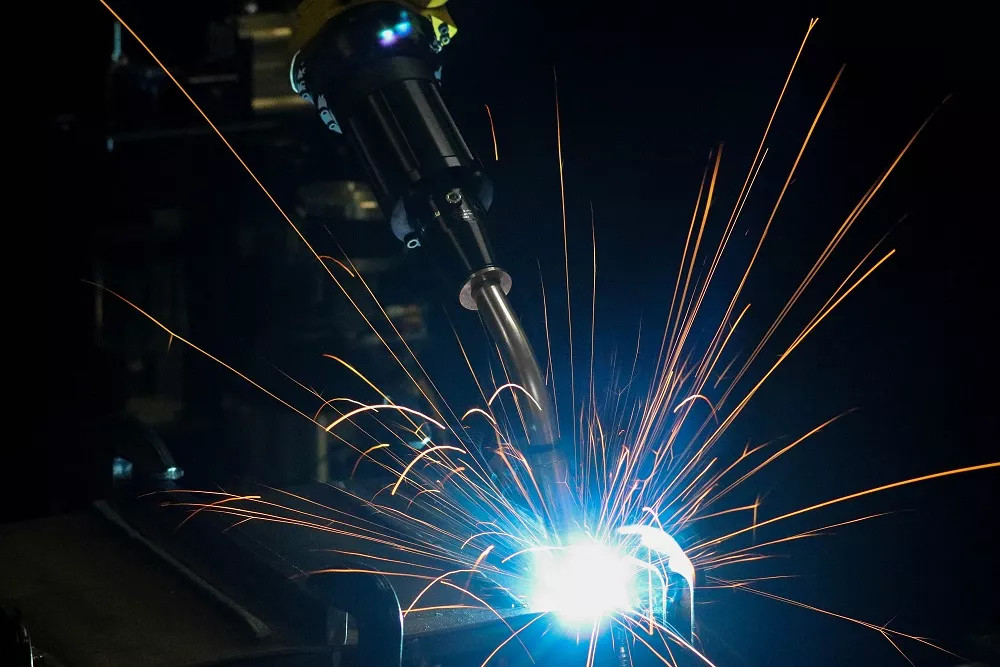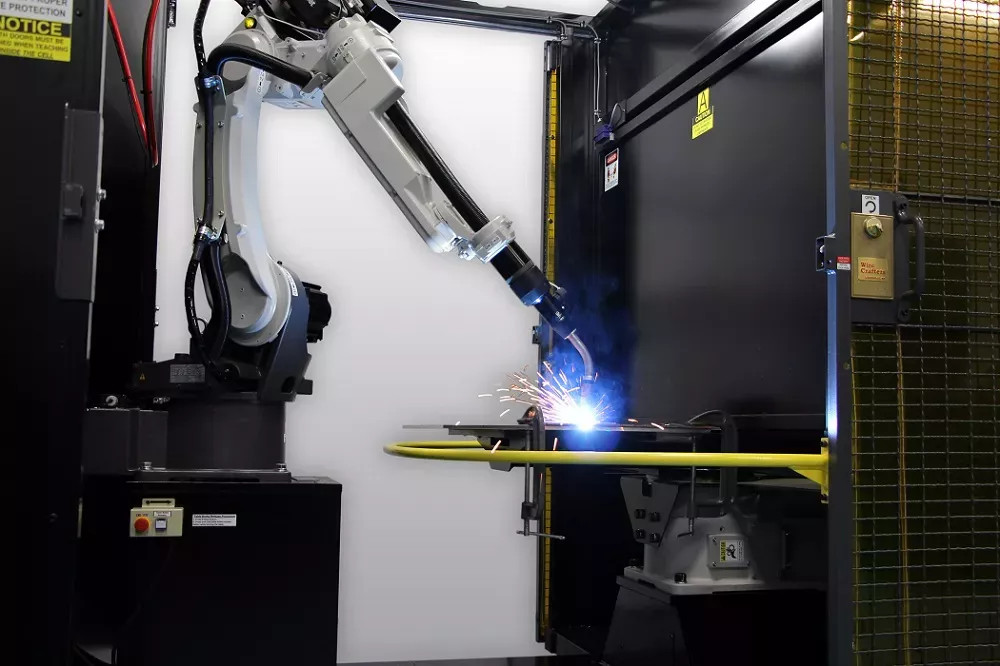
There are many common misconceptions about robotic GMAW guns and consumables that, if corrected, can help increase productivity and decrease downtime for the entire welding operation.
Robotic gas metal arc welding (GMAW) guns and consumables are an important part of the welding operation yet are frequently overlooked when investing in robotic welding systems. Companies often choose the least expensive option when, in reality, purchasing quality robotic GMAW guns and consumables can lead to significant cost savings in the long run. There are many other common misconceptions about robotic GMAW guns and consumables that, if corrected, can help increase productivity and decrease downtime for the entire welding operation.
Here are five common misconceptions about GMAW guns and consumables that may be affecting your robotic welding operation.
Misconception No. 1: Amperage Requirements Don’t Matter
A robotic GMAW gun is rated according to amperage and duty cycle. Duty cycle is the amount of arc-on time a gun can be operated at full capacity within a 10-minute period. Many robotic GMAW guns in the marketplace are rated at 60 percent or 100 percent duty cycle using mixed gases.
Welding operations running robotic GMAW guns and consumables often exceed the gun’s amperage and duty cycle rating. When a robotic GMAW gun is consistently used above its amperage and duty cycle rating, it risks becoming overheated, damaged, or failing completely, leading to lost productivity and increased costs to replace an overheated gun.
If this is happening regularly, consider upgrading to a higher-rated gun to avoid these issues.
Misconception No. 2: Space Requirements Are the Same in Every Weld Cell
When implementing a robotic weld cell, it’s critical to measure and plan before purchasing a robotic GMAW gun or consumable. Not all robotic guns and consumables work with all robots or in all weld cells.
Having the right robotic gun is an important factor that can help reduce or eliminate the sources of common problems in the weld cell. The gun must have proper access and be able to maneuver around fixturing in the weld cell so that the robot arm can access all the welds — ideally in one position with one neck, if possible. If not, different neck sizes, lengths, and angles, as well as different consumables or mounting arms, can be used to improve weld access.
The robotic GMAW gun cable is also an important consideration. Incorrect cable length can cause it to catch on tooling if it’s too long, move incorrectly, or even snap if it’s too short. Once the hardware is installed and the system is set up, be sure to do a test run through the welding sequence.
Finally, the choice of welding nozzle can greatly hinder or improve access to the weld in a robotic cell. If a standard nozzle is not providing the necessary access, consider making a change. Nozzles are available in varying diameters, lengths, and tapers to improve joint access, maintain shielding gas coverage, and reduce spatter buildup. Working with an integrator allows you to plan out everything needed for the welding you are doing. In addition to helping identify the above, they can also help ensure the robot reach, size, and weight capacity — and material flow — are appropriate.
Misconception No. 3: Liner Installation Doesn’t Require Much Attention
Proper liner installation is extremely important for quality welds and overall robotic GMAW gun performance. The liner must be trimmed to the correct length for the wire to get from the wire feeder to the contact tip and to your weld.

When implementing a robotic weld cell, it’s critical to measure and plan before purchasing a robotic GMAW gun or consumable. Not all robotic guns and consumables work with all robots or in all weld cells.
When a liner is cut too short, it creates a gap between the end of the liner and the gas diffuser/contact tip, which could cause issues, such as birdnesting, erratic wire feeding, or debris in the liner. When a liner is too long, it bunches up inside the cable, resulting in the wire encountering more resistance all the way to the contact tip. These issues can lead to increased downtime for maintenance and repairs, impacting overall productivity. An erratic arc from a poorly installed liner can also impact quality, which could potentially drive rework, more downtime, and unnecessary costs.
Misconception No. 4: Contact Tip Style, Material, and Durability Don’t Matter
Not all contact tips are the same, so it’s important to choose the correct type for your specific application. The size and durability of the contact tip are determined by the amperage needed and amount of arc-on time. Applications with higher amperage and arc-on time may require a heavier-duty contact tip than lighter applications. Although these may cost slightly more than lesser-grade products, the long-term value should negate the upfront price.
Another common misconception about welding contact tips is that you need to change them out before they serve their entire life. While changing them out during scheduled downtime may be convenient, letting the contact tip run its full lifespan before changing saves money by saving product. You should consider tracking their contact tip usage, noting excessive changeover and addressing it accordingly. This will help minimize downtime so that you can reduce unnecessary costs for inventory.
Misconception No. 5: Water-cooled Guns Are Difficult to Maintain
Air-cooled robotic GMAW guns are frequently used in high-amperage and high-duty-cycle operations in North America, but a water-cooled GMAW gun may be a better fit for your application. If you are welding for long periods of time and your air-cooled gun is burning out, you may want to consider switching to a water-cooled system.
An air-cooled GMAW robotic gun uses air, arc-off time, and shielding gas to remove the heat that builds up and uses much thicker copper cabling than a water-cooled gun. This helps prevent excessive heat from electrical resistance.
A water-cooled GMAW gun circulates a coolant from a radiator unit through cooling hoses. Then the coolant returns to the radiator, where the heat is released. The air and shielding gas further remove the heat from the welding arc. Water-cooled systems use little copper in their power cables, compared to air-cooled systems, since the cooling solution carries away the heat resistance before it builds up.
Robotic welding operations often choose air-cooled over water-cooled guns because they are afraid it will result in more maintenance and downtime; in fact, maintaining a water-cooled system is quite easy if the welder is trained properly. Additionally, while water-cooled systems may be more expensive, they can be a better investment in the long run.
Breaking Down GMAW Misconceptions
It is vital to consider GMAW guns and consumables when investing in robotic welding systems. The least expensive options may be costing you more down the road, so be sure to do your research before making a purchase. Correcting the common misconceptions about guns and consumables can help increase productivity and reduce downtime in the welding operation.
Post time: Jan-03-2023



